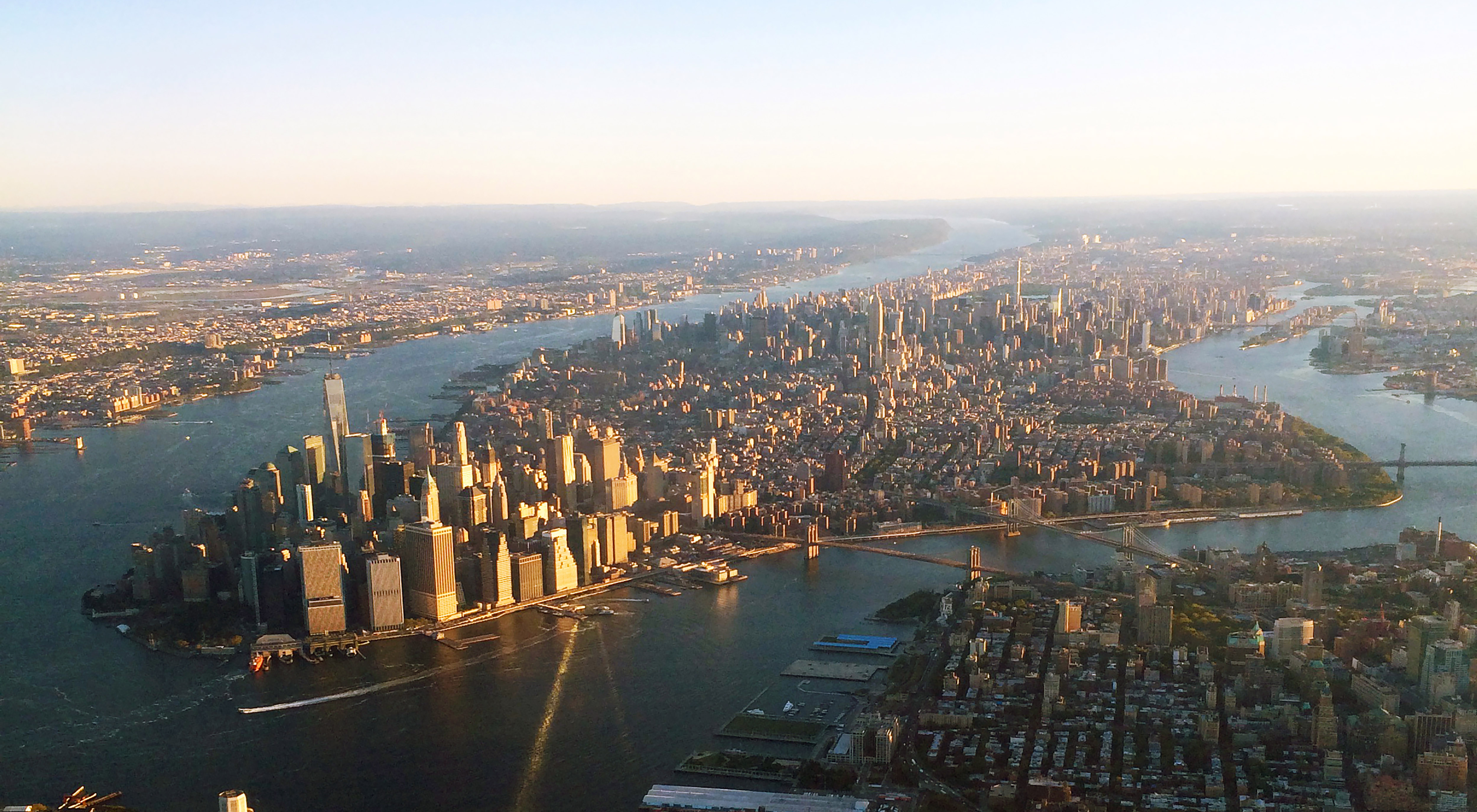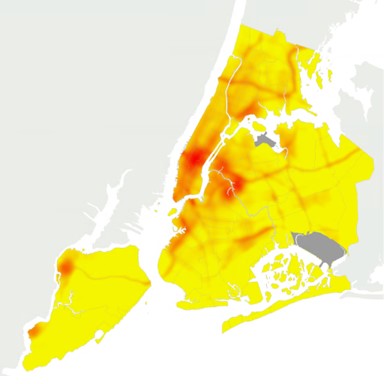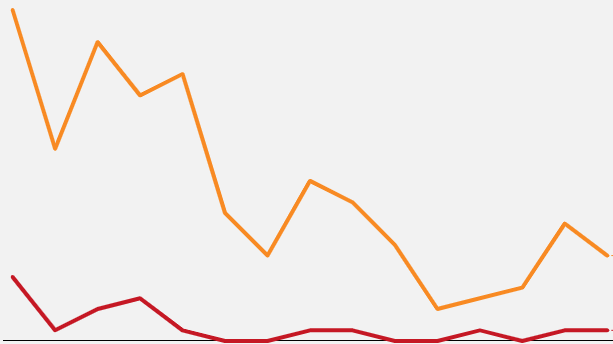Outdoor air quality
New York City's air contains particles, drops of liquid, gasses, and other pollution that can affect health - it can affect our breathing, and bad air quality can be particularly dangerous for older adults, children, and people with heart or lung conditions.
Air quality can vary from neighborhood to neighborhood, based on local levels of emmissions and many other factors. We monitor air quality using the New York City Community Air Survey (NYCCAS). NYCCAS is NYC's comprehensive air quality monitoring and modeling network, and it allows us to understand neighborhood differences in air quality - and what contributes to those differences.

Get the data: indicators on the EH Data Portal
Housing
Most people spend most of their time at home - so the household environment can significantly affect health. Disrepair that stems from longterm maintenance neglect can lead to serious health problems, including: lead poisoning from lead paint; asthma and other respiratory issues triggered by pests; and carbon monoxide poisoning.
In NYC, substandard housing is disproportionately located in low-income neighborhoods, as historical disinvestment lead to severe, systemic maintenance deficiencies that threatens people's health. No family should have to choose between affordable and healthy housing - all tenants are entitled to safe, decent, healthy housing that prevents disease and injury.
Get the data
More resources
Transportation and active design
Physical inactivity and unhealthy diet rank among the leading risk factors for premature death in the United States. Active design, however, promotes health by using architectural and urban design strategies to encourage walking, bicycling, stair climbing, transit use, active recreation, and healthy eating.
Designing to increase access to parks, create pedestrian plazas, ensure well-maintained sidewalks, plant street trees, provide secure bicycle storage, and make stairwaus in buildings attractive and accessible can have a measurable effect on people's ability to safetly get regular physical activity that can keep them healthy.
Get the data
More resources
Climate, weather, and health
NYC's climate is changing along with the world's climate. We expect more frequent and intense heat waves and increased rainfall, precipitation, and coastal storms. These will add to existing weather-related risks. Already, heat kills more people than all other natural disasters combined.
In New York City, those most vulnerable to heat's dangers are older adults and people with health conditions like heart disease, diabetes, and cognitive impairment - especially those in low-income neighborhoods. Air conditioning is the best defense against heat-related illness and death - so the equitable distribution of energy and air conditioning is a crucial way to minimize the health effects of heat and climate change.
Get the data
More resources
Food and drink
We all make choices around food and drink, but sometimes, those choices are made for us by our food environments.
Our food environments include neighborhood-level alcohol access, unhealthy food access, and restaurant food safety. Additionally, drinking water quality data includes data on contaminants that are most frequently found at levels that may be of public health significant in the country's drinking water.
Get the data
More resources
Pests and pesticides
Pests and pesticides can both have health effects. Household pests like mice, rats, and cockroaches can trigger asthma, while bed bugs are a well-known nuisance. Meanwhile, warmer winters may mean more vector-borne diseases like babesiosis and west nile virus.
Pesticides are chemicals used to control or kill insects, rats, mice, plants and weeds, or fungi (mold). Esposure to pesticides can occur from consuming foods or beverages that contain pesticide residues, from direct contact with the skin or eyes, or from breathing air in areas where pesticides are applied. Health effects from exposure to pesticides vary by chemical class. In general, short-term effects on humans from high levels of exposure include damage to the skin and eyes, difficulty breathing, neurological tremors or seizure and, in extreme cases, loss of consciousness and death. Current research is investigating whether chronic exposure to certain pesticides increases risk of some cancers, reproductive and developmental problems and neurodegenerative diseases such as Parkinson's disease.
Get the data
More resources
Social and economic conditions
Social and economic conditions affect people’s health. These conditions (also called “social determinants of health”) are conditions that people may be born into or fall into over the course of their lives. They are shaped by local, national and global distribution of resources and power.
People tend to be healthier when they have access to economic and financial stability, higher education, adequate health care, healthy neighborhoods, and safe, strong communities.
But when people don’t have access to these conditions, they experience worse health outcomes. This is health inequity – avoidable and unfair health outcomes. Discrimination based on race (and other personal characteristics) often results in disparities in access to these conditions –and thus, disparities in health outcomes.
Get the data
Child health
Children are fragile and can be more harmed by environmental threats. Plus, lifelong health can be determined by one's health as a child.
Get the data
Search all data
- ...
- ...
- ...
- ...
- ...
- ...
- ...

